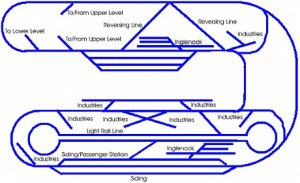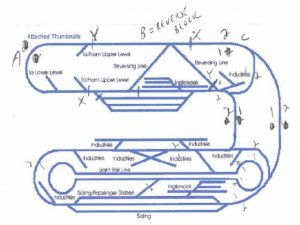Not the rest of the layout Jesso, but another section, most likely the other "end". My layout is probably schematicly similar, I have a double track main with turnback loops at each end, essentially a circle. The loops are reverse sections, and the double track between are wired with the same polarity so crossovers do not present a change of polarity. So each end can change polarity, but the track between does not.
Yes, any metal wheel crossing a gap where the rail has opposing polarities is a problem. As has been written here and the other threads, it is possible to make a reversing section longer than a train, you just extend the block to include enough trackage to accomodate the train. Obviously, if the reverse loop comes back to the same turnout it entered, the train can't be longer than it. In other cases, you can extend the block.
I just recently installed Tony's power shields on my layout. I tend to buy stuff long before I actually use it, when I pulled out my power shields bought years ago, I found a reversing unit as well. It does also protect in the same manner as a power shield, so I used it as one, not needing the reversing function. So, you could use a reversing module for each block of your layout if you so desired, but why spend the money. I do think tho that the power shields and reverser units are close in cost, but again I bought mine years ago, when they were still Tony's, not whatever they are called now. Pretty sure they are still Tony's but were always made by NCE and now maybe someone else? Or given a new name.
Let me know if this all makes sense!




